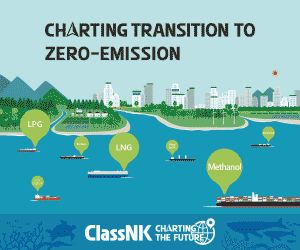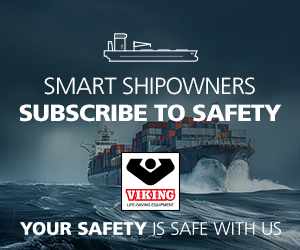During the 2025 SAFETY4SEA Manila Forum, Atty. Iris Baguilat, President of Döhle Seafront Crewing (Manila), Inc., discussed the crucial role of seafarer performance and human factors in ensuring safer shipping, emphasizing key factors such as advancements in technology, improved technical training, stricter safety regulations, and stronger focus on crew welfare.
The maritime industry has seen remarkable growth and transformation over the past decade, opening significant opportunities for countries like the Philippines to expand their presence in the global seafaring workforce.
Yet despite these opportunities, challenges remain about fully capitalizing on this potential.
According to the Review of Maritime Transport, the number of vessels worldwide has increased from 86,942 in 2013 to 108,789 in 2023, marking a 25% rise over a decade.
This includes all segments like cargo, passenger, and specialized vessels. Assuming each ship requires an average of 20 crew members, this equates to a global demand of approximately 2.2 million seafarers.
However, while the Philippines is often cited as contributing about 25% of the global seafaring workforce, recent figures suggest that the actual share of onboard slots is closer to 14%.
Even more concerning is that only 10% of maritime graduates are absorbed into industry.
A troubling gap
Despite a growing global fleet and a projected shortage of 106,000 maritime officers by 2026, many qualified Filipino seafarers stay unemployed.
Why is this the case? Is it a matter of overregulation? Is it a misalignment between training and market demands? Or systemic inefficiencies in deployment?
This marks a crucial moment and opportunity for industry and government bodies such as MARINA and the Department of Migrant Workers (DMW) to re-evaluate their policies.
Seafaring offers a unique and transformative opportunity, especially for individuals from underprivileged backgrounds.
Furthermore, it provides an immediate leap from poverty to middle-class status. This is why so many aspire to join the profession because it could change lives.
Human Performance
Beyond workforce statistics, it is also essential to recognize the impact of human performance in maritime operations.
One promising sign is the dramatic drop in total vessel losses – from 111 in 2013 to just 26 in 2023, based on data from the Insurance Information Institute.
 This improvement may be attributed to several factors, as the maritime industry is experiencing significant changes driven by advancements in technology, evolving regulations, and a greater focus on crew training.
This improvement may be attributed to several factors, as the maritime industry is experiencing significant changes driven by advancements in technology, evolving regulations, and a greater focus on crew training.
Moreover, seafarers are transitioning from traditional to digital navigation systems, such as ECDIS, which requires ongoing technical training in areas like data management, cybersecurity awareness, and problem-solving.
At the same time, stricter regulations, including the Magna Carta of Filipino Seafarers, and increased oversight from port state controls and charterers emphasize the need for enhanced safety and welfare standards.
In addition to technical expertise, soft skills training has gained importance, with crew members now being trained in leadership, communication, situational awareness, and teamwork skills.
Those skills are needed to ensure safe and effective maritime operations, particularly in multicultural environments where language and cultural differences may pose challenges.
Communication barriers
However, unfortunately, communication challenges are still a weak point. Maritime English continues to be a barrier for many seafarers.
Furthermore, according to a study by the World Maritime University (WMU), maritime education institutions often place little emphasis on communication and management skills, prioritizing technical training instead, making it a gap that needs to be urgently addressed.
In a ship’s microcosm where Filipinos, East Europeans, Indians, Chinese, and many others live and work together, leading, collaborating, and communicating effectively is just as critical as knowing how to operate machinery.
Fatigue
Even with fatigue being a long-standing concern, the pressures of staying digitally connected may be making it more pronounced. While constant access to internet services like Starlink allows seafarers to stay connected with loved ones, it comes at a cost.
Prolonged online engagement may lead to reduced sleep duration, which can impact alertness and increase safety risks.
Therefore, fatigue management must become a central part of crew welfare programs.
Despite advances in automation, the human element is still front and center in maritime safety and efficiency.
Addressing the challenges requires a focused effort on aligning training with market demands, enhancing soft skills, and improving crew fatigue management.
By fostering stronger collaboration between industry stakeholders, government bodies, and training institutions, the maritime workforce can be better equipped to meet the growing demand for qualified seafarers, ensuring safer and more efficient operations.
Decision-making, communication, and cultural understanding are essential to a successful voyage.
The article above was adapted and edited from Atty. Iris Baguilat’s presentation delivered at the 2025 SAFETY4SEA Manila Forum.
Explore more by watching her video presentation here below:
The views presented are only those of the authors, do not necessarily reflect those of SAFETY4SEA, and are for information sharing and discussion purposes only.
































































